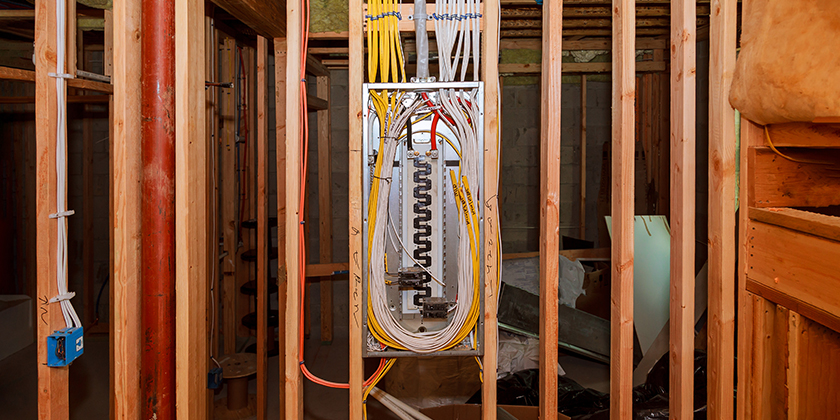Electrical Safety in the Workplace

May 4, 2020
When working with electricity, no hazard should be overlooked. According to specialists, there is no situation where electricity represents a lesser risk for workers. If the power is on, there is danger. The best protection against the risk of electric shock is to turn the power off before starting the task. It doesn’t take much to cause an accident.
Canadian federal legislation requires that employers exercise due diligence against workplace hazards, which means to make every reasonable effort to protect their employees. Bill C-21, passed in 2004, added Section 217.1 to the Criminal Code: “Everyone who undertakes, or has the authority, to direct how another person does work or performs a task is under a legal duty to take reasonable steps to prevent bodily harm to that person, or any other person, arising from that work or task.”
For electrical safety, the CSA Z462-08 standard “Workplace Electrical Safety” began in Canada in 2008. Today, the CSA Z462-18 standard, edited in 2018, is in effect. This standard focuses mainly on arc flash and electrical shock risks, and provides preventive measures to be implemented in order to avoid damages occurring generally when the work is performed in hazardous conditions.
How it is going with your electrical safety program?
According to the regulation, employers must implement and document a comprehensive electrical safety program to outline the activities adapted to electrical hazards, voltage, energy level and circuit conditions in the workplace and surrounding area.
Three types of risk when working on energized equipment:
• Electrization and electrocution. Electricity going through the body or “electrization”, can sometimes cause external and internal burns, cardiac rhythm disorders and injuries to organs. In severe cases, when injuries lead to death, this constitutes an electrocution.
• Burns caused by arc flash. Arc flash can be created by faulty equipment, unleashing a significant amount of energy that will burn the worker. The quantity of energy freed up by the arc is called “incident energy”. This depends on the short-circuit capacity at the fault, the circuit voltage, and opening time for protection.
• Explosion. This is a very dangerous phenomenon for workers. It can rupture eardrums, crush the lungs, and throw debris and molten metals that can severely injure the workers.
Analyzing incident energy
A study shall be conducted by experts to determine the potential exposure of a worker to the energy generated by arc flashes in order to prevent injuries, establish safe work practices and a proper arc flash perimeter, as well as to define the appropriate level of personal protective equipment.
Control of electric risks: working offline
The essence of the Occupational Health and Safety Act supports hazard elimination at the source. Working offline is an efficient method to eliminate hazards and prevent accidents from occurring every year. Constraints sometimes make it difficult to work on de-energized equipment; work planning is also required. Standards, work methods and equipment allow workers to perform their tasks safely.
Personal protective equipment
Employees working in locations where electrical hazards are present must use personal protective equipment designed and manufactured according to the body part to protect and the type of work to accomplish. The equipment is intended to protect workers against arc flash and electric shocks. Although certain situations can provoke skin burns even when protected, these burns are visibly reduced and not lethal. The protective equipment must be maintained in a safe and reliable state, visually inspected before each use, and stored properly to prevent deterioration due to humidity, dusts and other deteriorating agents.
Labelling clothing and PPE
The labelling of clothing and equipment must contain the following information:
• tracking code
• compliance to the ASTM F1506 standard
• name of manufacturer
• size
• care instructions and fibre composition
• ATPV (Arc Thermal Performance Value) or EBT (Energy Breakopen Threshold) indicated in cal/cm2 (for each fabric layer)
Labelling of electrical equipment
The relevant electrical equipment must be labelled on site to warn qualified people of the potential risks of arc flashes. Here are a few examples of equipment that must be labelled using warning labels:
• distribution panels
• electrical panels
• motor control center
• industrial control panels
• counter junction boxes
Labelling is necessary for every electrical equipment that may require an inspection, adjustment or maintenance when energized, which can potentially cause an arc flash.
Every modification or renovation of electrical equipment can cause a change in the data indicated on the label and will require an update of the arc flash assessment and labelling. The CSA Z462 standard can guide organizations through the implementation of an appropriate safety program. The safety program must at least be verified at intervals of no more than three years and the evaluation of electrical hazards must be reviewed periodically at intervals of no more than five years.
According to the CE Electrical Code, it is required to affix the label in a visible place for qualified people so it can be consulted before beginning the work. Generally, the label is placed on the outside of the panel or on the box door. In certain cases, organizations can choose to install the label on the inside of the door to protect it; however, it should only be done if the door must be opened to remove the front of the box in order always to make the label visible.
The key point is that labels must always be easily visible to workers before they are exposed to potentially dangerous equipment.
From the moment organizations become aware of electrical hazards, SPI offers services and equipment to protect people who work, one way or another, with electricity. Contact our experts for advice or for training your teams.
This article was first published online by SPI Health and Safety; www.spi-s.com/en/blog/electrical-safety/electrical-safety-in-the-workplace. The company’s mission is to be the single most valuable partner for companies that value health and safety in their work environment.

















